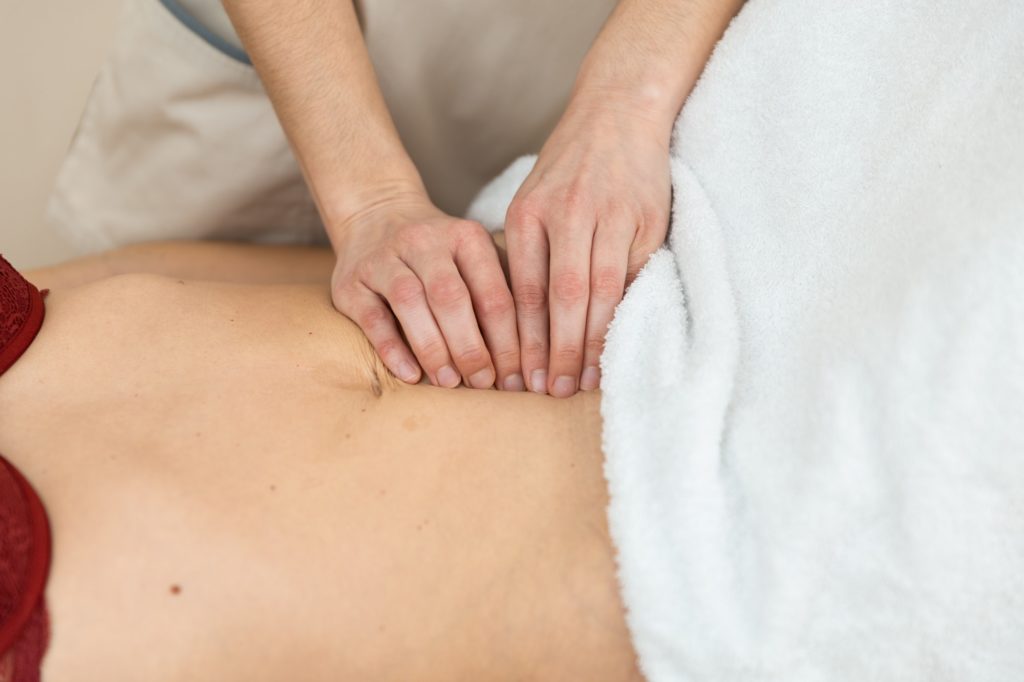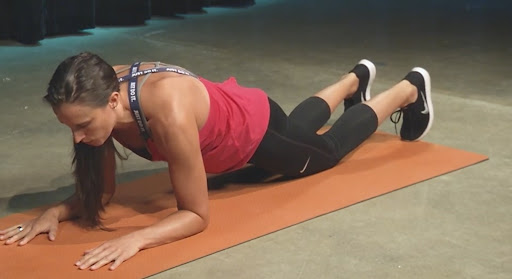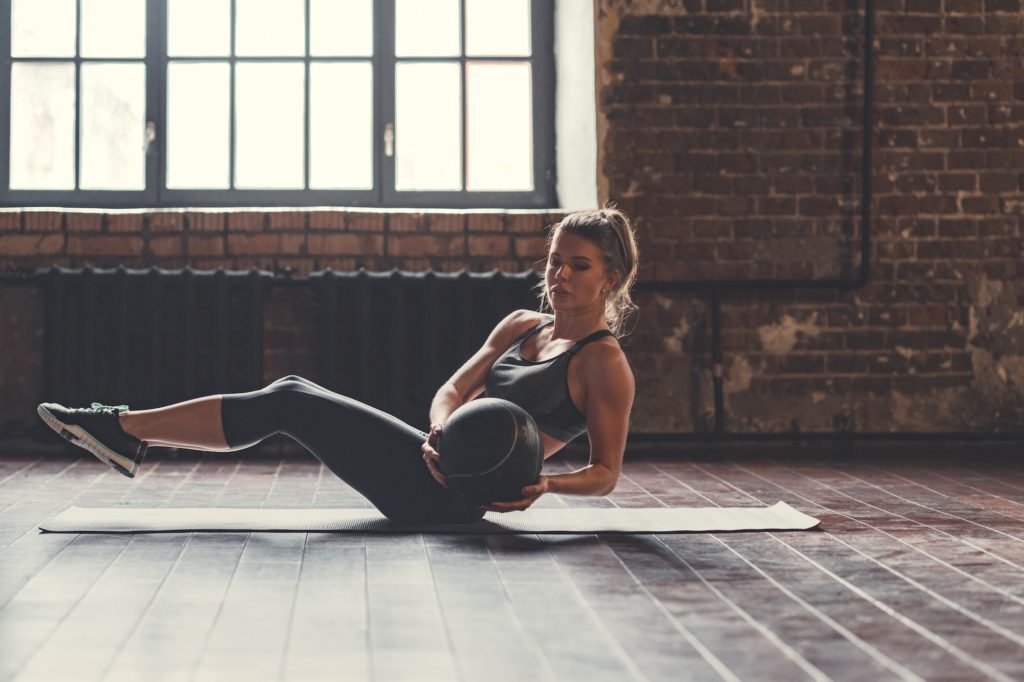As a card carrying member of the Y chromosome I did not write today’s article.
This isn’t to say I lack the confidence or knowledge to do so – in fact, I’ve gone out of my way in recent years to educate myself more on postpartum issues so that I am better prepared to work with & help my female clients.
It’s just I feel this is a topic in better hands with a woman. And not only that, a woman who has had firsthand experience with diastasis recti.1
I don’t feel this is a controversial take.2
If you’re someone – man or woman – who works with postpartum clients it will behoove you to read this article via Certified Personal Trainer and Postpartum Exercise Specialist Gina Paulhus.
She does an excellent job providing actionable solutions to a complex problem.

I Can Teach You How to Improve Diastasis Recti with Exercises Anyone Can Do
Have you been told you have diastasis recti? Or have you figured it out on your own while spending some quality time with Google? While it can be scary to think that you have a “hole” in your abs, take heart – there are many non-surgical options available.

I have healed my own diastasis as well as two large hernias with a natural, exercise-based approach. This outcome was confirmed by ultrasound. My healing happened after several surgeons told me that my only solution would be to get total abdominal wall reconstruction – with mesh!
Note From TG: puh!
What is Diastasis Recti, Exactly?
To answer that question, a bit of anatomy is in order. The two sides of your abdominal wall connect in the middle on a line of fascia called the linea alba.
This line appears between each and every person’s “six pack” muscle, otherwise known as the rectus abdominis. When that tissue in the midline thins out beyond a certain point it’s known as diastasis recti. Pregnancy is the most common reason a person develops a diastasis.
While more women develop diastasis, it can totally happen to dudes as well.
Certain workouts and non-optimal daily movement patterns can both make a diastasis worse, which is why it’s important to identify when you have a diastasis so that you can take steps to nip it in the bud.
Hey, Fancy-Pants: You Can Measure Your Own Diastasis
You can measure your diastasis by barely lifting your head and checking the width and depth between the two sides of the rectus abdominis muscles. Anything greater than two and a half finger widths is going to qualify you as a card-carrying member.
You also want the area to feel on the firm side – think trampoline-like. Broken trampolines are no bueno. A doctor, PT or Postpartum Exercise Specialist will be able to assist you in checking if you’re unsure. It’s always going to be a bit of an estimate when using fingers. Ultrasound is the gold standard on whether or not a diastasis is present.1
Every pregnant woman has a diastasis at their due date, so it’s normal at that point in time. By some estimates 39% of women have a diastasis at six months postpartum.2 Because of that peeps, we can’t necessarily assume that everyone will bounce back the same way after giving birth! In other words, stay clear of those show offs on the ‘gram who are hoisting cars overhead a few weeks out from giving birth. The other thing to know is that diastasis can become a greater problem with each subsequent birth because the tissues will stretch faster the more times they have been stretched out before.
Oftentimes if a woman is “fine” after one child she is shocked when, by her second or third child, things have changed a lot in her abs. For other women, the first pregnancy has already led to a diastasis that didn’t resolve.
Everyone is different and each pregnancy is different. I CAN’T EMPHASIZE THAT ENOUGH. The nice thing is, once you know how to correct diastasis recti, the same principles can be utilized during any future pregnancies to keep yourself safe.
And then maybe, you too can hoist a car after giving birth next time (I mean, I wouldn’t).

What’s the Big Deal About Having a Diastasis?
A huge part of our core’s job is to be able to handle pressure generated in our body. This pressure is generated when we work out as well as during daily activities. We generate pressure in our core in order to protect our spine. If pressure is generated poorly, it can result in a diastasis forming.
By learning how to fine tune our pressure management, we put our bodies into a position to undo the damage. HOW COOL IS THAT? IT’S LIKE MAGIK.
How do you know your limit of how hard you can push? If you see a doming out of your midline during exertion, it’s a telltale sign that you have a diastasis and that what you are doing is making it worse. A poochy lower belly that sags and protrudes is another red flag to watch out for.
Can’t I Just Have Surgery For My Diastasis?
Yes, surgery is an option. However, I will warn you – even if you choose to get surgery, that doesn’t mean your work is done.
If you haven’t taught yourself how to better manage pressure in your core, the diastasis could very well return. And if it does, the additional scar tissue you will have accumulated might cause more problems.
You also will become weaker while you lay dormant waiting for your surgery to heal – the exact opposite of what a diastasis needs, which is more core strength!
Rather than skip immediately to surgery, I would much rather see folks learn how to manage pressure in their core.
This sets them up for success in healing a diastasis naturally, as well as leads them to the best possible post surgical outcome if surgery is chosen. Either way, learning proper pressure management is where it’s at when it comes to healing a diastasis.
There are particular muscles that need to be called out and worked when you’re looking to correct diastasis recti.
- Learning to contract a special “corset” muscle deep in your abs called your transverse abdominis (TAs) before you perform an exercise can help create tension across your midline. Once that tension is in place, it means that you get the green light to work your core. And working your core is what you so desperately need for healing. Fascia requires stress to heal. But like goldilocks, not too much and not too little is best.
- Your pelvic floor works as a team with your TAs, so we want to make sure that it is up to snuff. It may be tighter or looser than we want for optimal functioning. Leaking pee when coughing, sneezing or exerting is a sign that things are amiss.
- Working on how you breathe can go a long way toward healing a diastasis. When our breathing technique is off, it loads excess pressure on your diastasis, preventing the fascia from healing. The diaphragm is a critical muscle for our breathing function.
- Other muscles can affect how our core loads too. Take inventory of your serratus muscle (the muscle just in front of and under your armpit) as well as your glutes. Both can have a huge impact on healing a diastasis.
Muscles need time to heal after getting stretched out due to pregnancy or other causes. Rushing right back into all the exercises you did before is a recipe for keeping a diastasis present – or for making it worse. DON’T FEED THE MONSTER! Fascia can heal when we support it with the right environment, but the timing of when we challenge it versus when we let it rest matters. A lot.
Tackle Correcting Your Diastasis in these 4 Steps
Step 1: Work On Your 360 Breathing
This exercise will help improve the amount of pressure that is pushed out toward your diastasis, whether we are talking during exercise or during everyday life. Bad habits in daily life can undo a lot of high quality exercise, FWIW.
Step 2: Find Your TAs, Otherwise Known As Your “Corset” Muscles
You’d be surprised how many people’s TAs are completely out to lunch! It’s common for the bigger ab muscles to do all the work after a diastasis has formed. Unless we specifically perform an exercise that forces them to come back on board, the TAs could be lost forever.
Don’t let that happen people!
Step 3: Test How Stable You Can Keep Your Core While You’re Moving Your Limbs
If you feel any movement at all in your pelvis, slow the move down, or simply don’t extend your leg as far. This exercise will greatly improve the stability of your core – something everyone with a diastasis so desperately needs.
Step 4: If You’re Having Trouble With Any of the Above Exercises, You Might Need to Do Some Release Work
While a professional massage is great, ain’t nobody got time for that on the regular. This technique is great to do at the beginning of your workout to make performing the above exercises easier. And heck yeah, who wouldn’t want to make exercises easier?
What’s Up With Those Abdominal Binders?
They can be a good idea when you’ve just had a baby to use something to help support the abs. But hold up – after the first six weeks I don’t recommend wearing one, and here’s why.
- Binding the abs can create more pressure down on the pelvic floor, which can contribute to other issues developing such as pelvic organ prolapse. Bottom-up support in the form of a pair of supportive shorts are safer if you must use some external support.
- As I said before, fascia needs some stress to heal. It’s similar to the idea of wearing an ankle brace for the rest of your life – if you do that, your ankle will never get stronger.
You can always apply tape to your abdomen while trying to bridge the gap between wearing a binder and going with nothing. I know many folks who have healed their diastasis who swore by the tape. I like Rocktape best for this, although KT tape can also work. And you also get to cover yourself in brightly colored strips so that randoms can ask you questions.
It’s a great ice breaker.
What are the Keys to Healing a Diastasis To Completion Once and For All?
Why, I’m glad you asked.
1. Build a more efficient and effective breathing pattern.
Good breathing patterns help our structure and also prime our nervous system to push out the optimal hormones to heal. The 360 breathing drill in the video above is a great start.
2. Improve posture.
Poor posture puts a ton of pressure out on a diastasis, preventing healing. Good posture, in a nutshell, involves stretching tall and stacking our ribcage over our pelvis well. Make grandma proud, yo!
3. Perform exercises that strengthen the full body.
When the rest of your body is strong, less pressure is applied to the abdomen. Strong glutes and a strong pelvic floor in particular really matter for how a diastasis heals! Since your pelvic floor can be too tight or too weak for optimal functioning, it’s important to figure out what’s going on with yours. See my article on prolapse here for more information on the pelvic floor.
You can also read more about leaking here.
4. It’s not enough to have strong abs.
They need to be balanced! A corrective exercise specialist can check out how your muscle balance is looking and prescribe a workout plan to help. If you need help with the other muscles I mentioned as well, such as the serratus or the glutes, once again a corrective exercise specialist can save the day.
5. Whatever you do, STOP DRAWING IN YOUR BELLY in an attempt to support your diastasis!
This is only going to make things worse since it interferes with the natural functioning of your core. Take my word for it. The halter tops will have to wait.
Remember, I have healed my own diastasis as well as 2 large hernias with this exact full body approach. This outcome was confirmed by ultrasound. My healing occurred from committing to an exercise plan after a few different surgeons told me that my only solution would be to get total abdominal wall reconstruction with mesh!
About the Author
Gina Paulhus, CPT and PCES Certified, has been a personal trainer for over 20 years. Through her company Home Bodies she offers in home as well as Zoom 1:1 Personal Training. Gina’s passions include helping men and women heal from a diastasis as well as from hernias. She is a two time author. Gina is also the creator of the world’s first Adult Gymnastics Camp.

Sources
1 A T M van de Water 1, D R Benjamin 2. Measurement methods to assess diastasis of the rectus abdominis muscle (DRAM): A systematic review of their measurement properties and meta-analytic reliability generalisation. 2016 Feb;21:41-53. DOI: 10.1016/j.math.2015.09.013
2 Patrícia Gonçalves Fernandes da Mota, Augusto Gil Brites Andrade Pascoal et. al. Prevalence and risk factors of diastasis recti abdominis from late pregnancy to 6 months postpartum, and relationship with lumbo-pelvic pain. Observational Study Man Ther. 2015 Feb;20(1):200-5. doi: 10.1016/j.math.2014.09.002.


